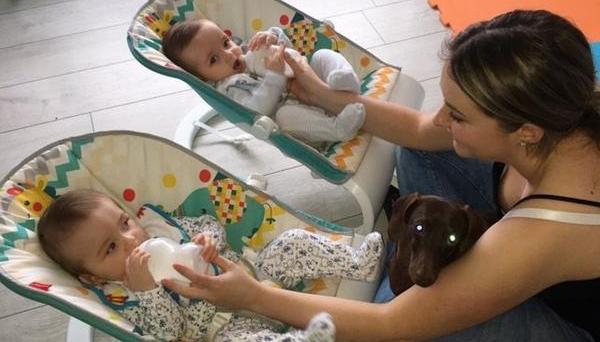Some mothers plan to breastfeed, but also want to have the option to use infant formula milk or expressed breastmilk occasionally. For others, perhaps because of ongoing difficulties with one or more of the babies, family demands or changing circumstances the decision is made to change to partial breastfeeding or mixed feeding.

What do I need to think about if I want to mix feed?
Think about first getting your milk supply established so that you can continue to have flexibility in offering breastfeeds. If you breastfeed or express 8-12 times in 24 hours in the first few weeks this will establish your breastmilk supply and you are more likely to be able to continue partially breastfeeding as long as you wish. Remember that any excess breastmilk can be frozen and used to feed the babies in a bottle at a later date.
Research tells us that the more breastmilk you give your babies the more protection they will receive from illnesses such as asthma, diabetes, gastroenteritis, ear and respiratory infections. Consider how you can maximise the amount of breastmilk each baby receives. For example, if one baby is not breastfeeding at all you might decide to give them some expressed breastmilk more frequently than the baby/babies who are having regular breastfeeds.
Unless advised otherwise by a health professional, it generally works better for parents and babies to substitute a single feed with formula than to supplement or ‘top-up’ breastfeeds. In the early days it is generally better for babies to be given infant formula in the daytime rather than at night, when the mother’s hormones are at a higher level for breastmilk production. Breastfeeding at night will help you to maintain your supply of breast milk.
When feeding your babies infant formula milk try and keep to the little and often feeding pattern of a breastfeeding baby. In this way babies don’t get used to larger volumes of milk at certain feeds, which can then lead to the need to ‘top up’ with infant formula at each breastfeed. This is especially important if you are giving more than the occasional feed of infant formula. Unicef offer more information.
If you sense your breastmilk supply has dropped too low for your babies’ needs, then try cutting out feeding infant formula for a few days and try breastfeeding more frequently. This can help to bring the supply of breast milk back, often within 48 hours. Alternatively you can increase the frequency of expressing to help with milk production.
Some mothers report that their babies go happily between breastfeeding and a bottle, from a very early stage. But some seem less happy to do this. You might therefore want to wait until you feel that the breastfeeding is going well before you start to introduce bottles.
If you are thinking about introducing some infant formula milk at a later stage and are worried about your babies taking a bottle, some parents say it is helpful to introduce an occasional bottle at around six weeks (of expressed breastmilk or infant formula) and continue to give them a bottle once or twice a week. However, there is no research to support this idea.
Positioning for feeding one baby by the breast and one by the bottle
Sit on the floor with your back against the sofa and a bouncy chair between your legs or sit on the sofa with the bottle-fed baby sitting square to you, placed in a feeding cushion in a semi-upright position. Remember to never leave a baby unattended on a sofa/bed etc.
REMEMBER: however much breastfeeding you do there is no limit on the amount of time you can spend skin-to-skin or just cuddling with your babies. Keeping in tune with your babies’ needs. Responding to their cues for food and comfort will help to keep that close bond with your babies.
Please follow the instructions for cleaning and sterilising bottles carefully.
-strap.svg)